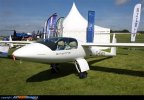Aceman
Pre-Flight
- Joined
- Jan 17, 2024
- Messages
- 72
- Display Name
Display name:
Aceman
I have been training for 11 days now in the glider and have never had tailwheel experience. It is quite difficult to land and bring a glider to a stop as it only has 1 wheel in the CG and a forward wheel in the front (which keeps the nose from scraping the ground). While nose overs are impossible on a glider, they are privy to ground loops and also keeping the plane straight without the wings going back and forth banging the ground and creating oscillations due to the single wheel.
Is a tailwheel still harder to land due to the big risk of braking too much and causing the nose to push over? That's the only thing I can think of that would make it more dangerous than a glider.
Thoughts?
Is a tailwheel still harder to land due to the big risk of braking too much and causing the nose to push over? That's the only thing I can think of that would make it more dangerous than a glider.
Thoughts?


